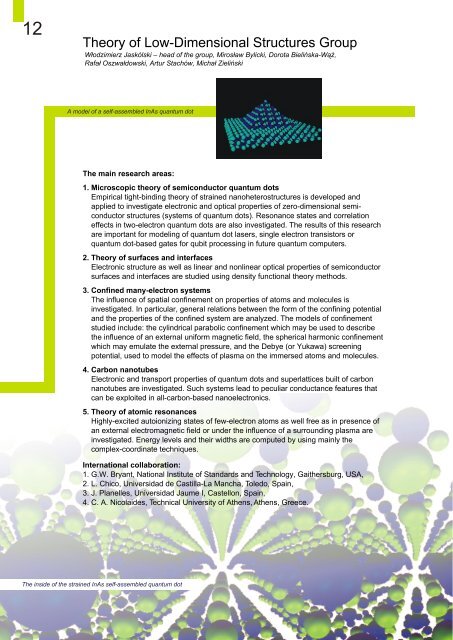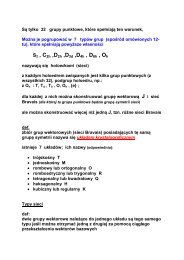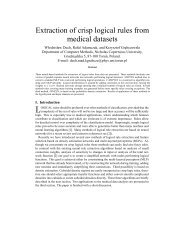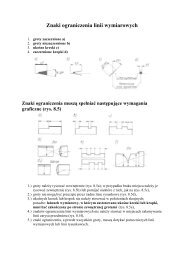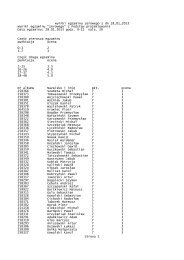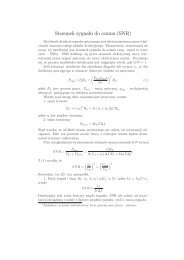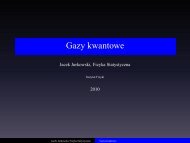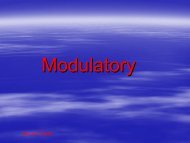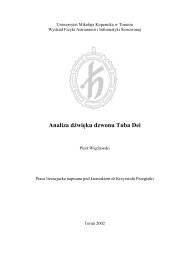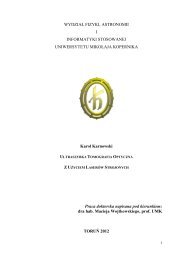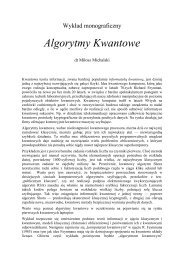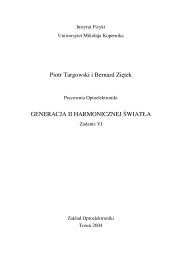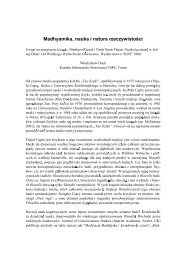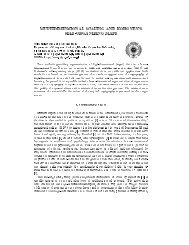Physics at Nicolaus Copernicus University
Physics at Nicolaus Copernicus University
Physics at Nicolaus Copernicus University
Create successful ePaper yourself
Turn your PDF publications into a flip-book with our unique Google optimized e-Paper software.
12<br />
Theory of Low-Dimensional Structures Group<br />
W³odzimierz Jaskólski – head of the group, Miros³aw Bylicki, Dorota Bieliñska-W¹¿,<br />
Rafa³ Oszwa³dowski, Artur Stachów, Micha³ Zieliñski<br />
A model of a self-assembled InAs quantum dot<br />
The main research areas:<br />
1. Microscopic theory of semiconductor quantum dots<br />
Empirical tight-binding theory of strained nanoheterostructures is developed and<br />
applied to investig<strong>at</strong>e electronic and optical properties of zero-dimensional semi-<br />
conductor structures (systems of quantum dots). Resonance st<strong>at</strong>es and correl<strong>at</strong>ion<br />
effects in two-electron quantum dots are also investig<strong>at</strong>ed. The results of this research<br />
are important for modeling of quantum dot lasers, single electron transistors or<br />
quantum dot-based g<strong>at</strong>es for qubit processing in future quantum computers.<br />
2. Theory of surfaces and interfaces<br />
Electronic structure as well as linear and nonlinear optical properties of semiconductor<br />
surfaces and interfaces are studied using density functional theory methods.<br />
3. Confined many-electron systems<br />
The influence of sp<strong>at</strong>ial confinement on properties of <strong>at</strong>oms and molecules is<br />
investig<strong>at</strong>ed. In particular, general rel<strong>at</strong>ions between the form of the confining potential<br />
and the properties of the confined system are analyzed. The models of confinement<br />
studied include: the cylindrical parabolic confinement which may be used to describe<br />
the influence of an external uniform magnetic field, the spherical harmonic confinement<br />
which may emul<strong>at</strong>e the external pressure, and the Debye (or Yukawa) screening<br />
potential, used to model the effects of plasma on the immersed <strong>at</strong>oms and molecules.<br />
4. Carbon nanotubes<br />
Electronic and transport properties of quantum dots and superl<strong>at</strong>tices built of carbon<br />
nanotubes are investig<strong>at</strong>ed. Such systems lead to peculiar conductance fe<strong>at</strong>ures th<strong>at</strong><br />
can be exploited in all-carbon-based nanoelectronics.<br />
5. Theory of <strong>at</strong>omic resonances<br />
Highly-excited autoionizing st<strong>at</strong>es of few-electron <strong>at</strong>oms as well free as in presence of<br />
an external electromagnetic field or under the influence of a surrounding plasma are<br />
investig<strong>at</strong>ed. Energy levels and their widths are computed by using mainly the<br />
complex-coordin<strong>at</strong>e techniques.<br />
Intern<strong>at</strong>ional collabor<strong>at</strong>ion:<br />
1. G.W. Bryant, N<strong>at</strong>ional Institute of Standards and Technology, Gaithersburg, USA,<br />
2. L. Chico, Universidad de Castilla-La Mancha, Toledo, Spain,<br />
3. J. Planelles, Universidad Jaume I, Castellon, Spain,<br />
4. C. A. Nicolaides, Technical <strong>University</strong> of Athens, Athens, Greece.<br />
The inside of the strained InAs self-assembled quantum dot


